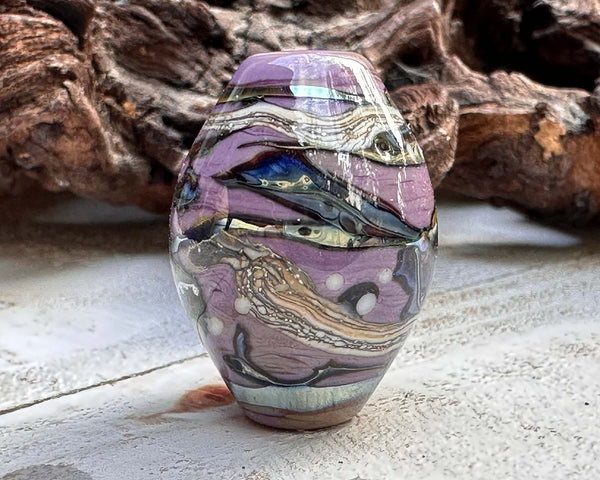Ethereal Lampwork Beads with Shards
These beads were crafted using reactive shards over reactive base glass colors, resulting in captivating organic reactions. The fusion of dots, lines, and shards on these beads are brimming with distinct character and allure. Each bead boasts a unique identity, influenced by the specific shards used and the reactions they create. The incorporation of metallic accents in select beads imbued them with additional dimension, further enhancing their visual impact.
The video by Robin from Scottwood Research is what inspired me to play around with some of the shards in my glass collection. I had not been able to decide how to use them and her video gave me the idea on what to test. Using reactive base glass colors just added extra unique reactions within the glass.
This first one was made on a base of dark ivory with silvered shards. Adding dots of intense black, Double Helix Triton, and ivory created their own unique reactions with the ivory glass. This is one of my favorites out of the three.




